All of Something
Tore Wallert
16/12/2017 – 12/01/2018
Support: Iaspis, Valsts Kultūrkapitāla fonds, VKN
Most sincere and special thanks to Inga Meldere un Daša Meļņikova!
Photos: Tore Wallert
All of Something
Tore Wallert
16/12/2017 – 12/01/2018
Support: Iaspis, Valsts Kultūrkapitāla fonds, VKN
Most sincere and special thanks to Inga Meldere un Daša Meļņikova!










Photos: Tore Wallert
Dunno on the Moon
Elīna Vītola
31/08 – 5/10/2017
Out of sheer idleness Dunno often looked at the painting on the wall with its indistinct crooks and scribbles, and tried to the best of his abilities to understand what’s depicted in it.
– Brother, you better not look at that picture over there, – Kozlik instructed him. – Don’t puzzle over it. There’s nothing to understand anyway. Every artist here draws like that, because the rich only buy that kind of pictures. The first smears, vey, scrawls like this, the other draw on some kind of abtruse buffooncurves, the third well enough – spills sloppy paint in a tray and then flicks it in the middle of canvas so it leaves some preposterous, faulty stain. You look at this stain and cannot understand a thing – pure garbage! But the rich just stare and praise. “Say, we don’t even need painting to be understandable. We don’t even want for artist to teach us whatnot. The rich understand everything as well without an artist, but the poor don’t need to understand anything. That’s why he is poor to understand nothing and to live in the darkness.” Look how they rabbit! Well, borther, I’ve seen enough how the rich live – even though there’s central heating everywhere, with a fireplace, they say, it looks fancier.
Nikolay Nosov. Dunno on the Moon (1965)
Elīna Vītola is a painter that rarely takes part in exhibitions, but gladly attends jour fixes. This is artist’s first collaborating with the known Russian illustrator Heinrich Valk (1918 – 1998).
Support: State Culture Capital Foundation







Photos: Līga Spunde
Nollywood
Frank Boyd
15/06 – 13/07/2017
..therefor living in bondage can be a way of escaping. The mating season starts with a loud croak that dissolves into air like a warm breath. Dark violet shades of bijouterie hanging above the shoulders. Streams of illegal duplicates run like a wild animals. Rain hits hard..
..beige slug leaves a bitter layer of secrets. Talking drums babble on the changing weather. Subtle tones vibrate the images of the cosmos. Talk to tinnitus, hear its cries. Enter the shrine where smoke laughs at lasers. One of twins loses smell, the other talks to tortoise. Howl of the skull that married the daughter of a traveler. Wild tree-dwelling vines gives shadow to seven girls. A thread is lost in a hurry. Trajectory of my next move is determined by a magic stone. Yet I drink too much. The winds carry words back and forth leaving no trace of the question. Dirty shoes step to the beat. The heat is overwhelming. Roots sing the song of loneliness and slowly yawn. Stick into marmalade while brushing your yellow teeth. The moon is high, its round smile heals blisters. Feast of termites. Clean hand shakes with grace. Northern pebbles exhale worries, southern rods bend to the sound of morning hangover. Pistol grip shines like a diamond..

Photo: Raul Paul
British scientists on dogo
F5
18/05 – 8/06/2017
Support: State Culture Capital Foundation, VKN






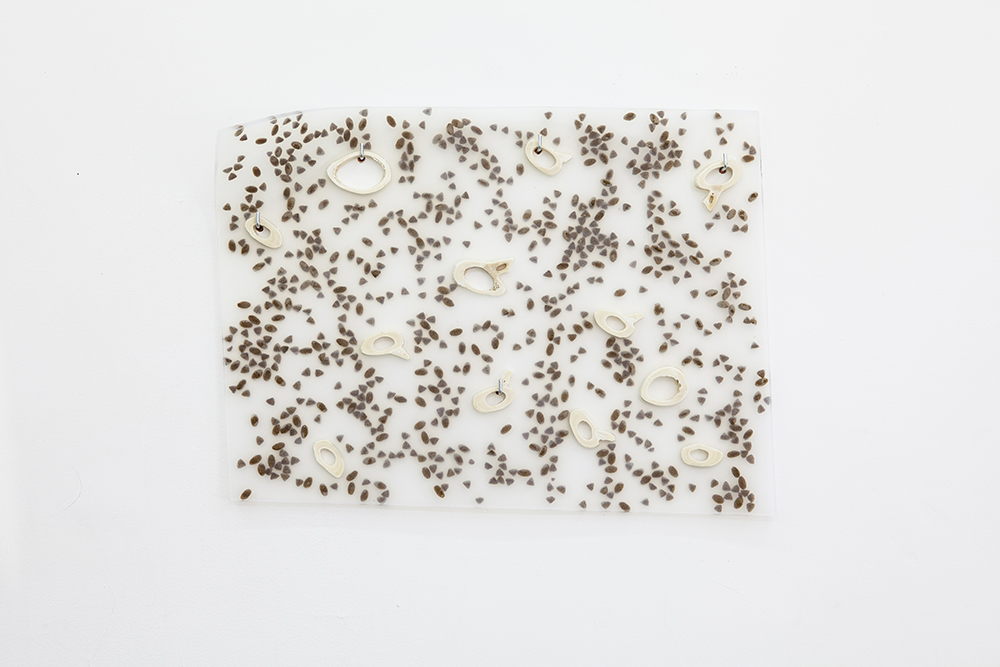




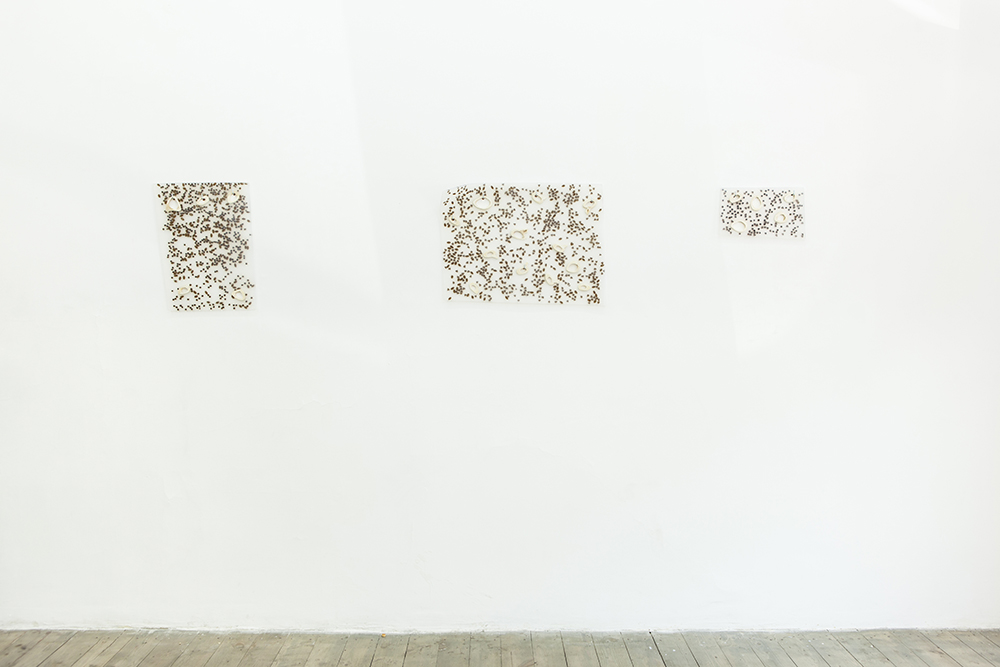




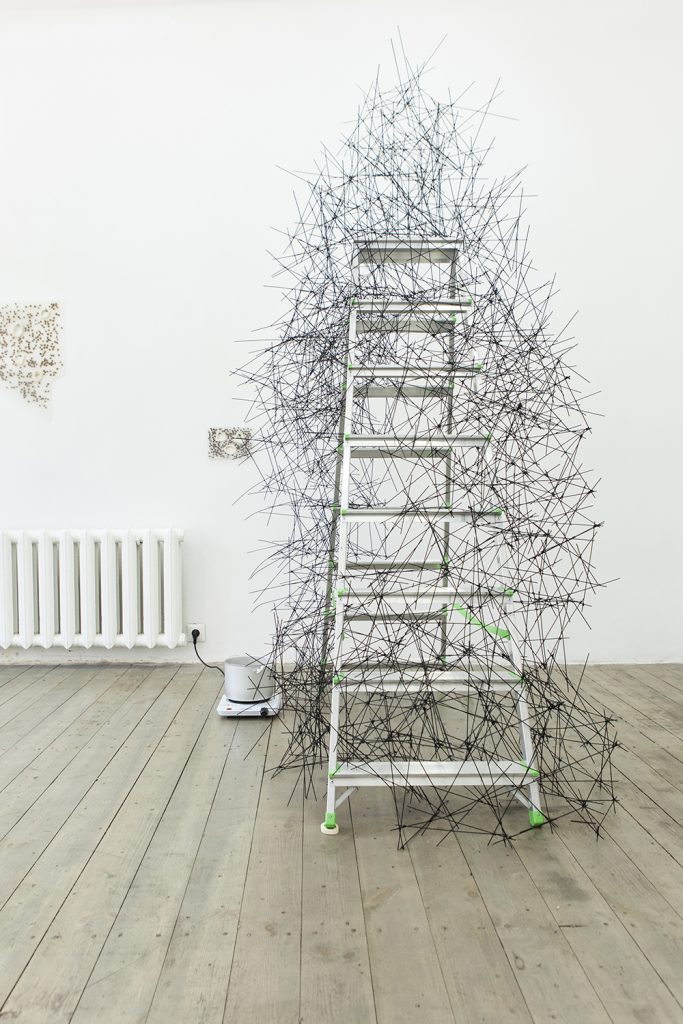


Photos: Kristiāna Marija Sproģe
– cornered –
Mirak Jamal
30/03 – 3/05/2017
A large acute triangle divided into unequal segments, the narrowest one pointing upwards, is a schematically correct representation of spiritual life. The lower the segment the larger, wider, higher, and more embracing will be the other parts of the triangle.
The entire triangle moves slowly, almost invisible, forward and upward and where the apex was “today,” the second segment is going to be “tomorrow,” that is to say, that which today can be understood only by the apex, and which to the rest of the triangle seems an incomprehensible gibberish, tomorrow forms the true and sensitive life of the second segment.
Kandinsky, Wassily. On The Spiritual In Art (1910). New York: Solomon R. Guggenheim, 1946.
Mirak Jamal, born in Tehran, Iran, grew up in the USSR, Germany, the U.S., and finally Canada where he studied at the Ontario College of Art and Design, Toronto. His work has shown internationally with recent solo exhibitions: “Mother! Minsk! Where are you!” at Galerie Sultana in Paris, France (2016); “Mirak Djamal, IRONIMUS ’91” at Rolando Anselmi in Berlin (2016); “BRUSSELS OCT. 29TH, 2015” at MonCheri in Brussels, Belgium (2015). Some of the recent group shows include “Black Hole Sun” at The Loon in Toronto, Canada (2016), “Dream Song 386” at Cooper Cole in Toronto, Canada (2015); “Conflicting Evidence” and “An Account of Discovery and Wonder” at 1857 in Oslo, Norway (2015). He lives and works in Berlin, Germany.
Support: State Culture Capital Foundation, VKN













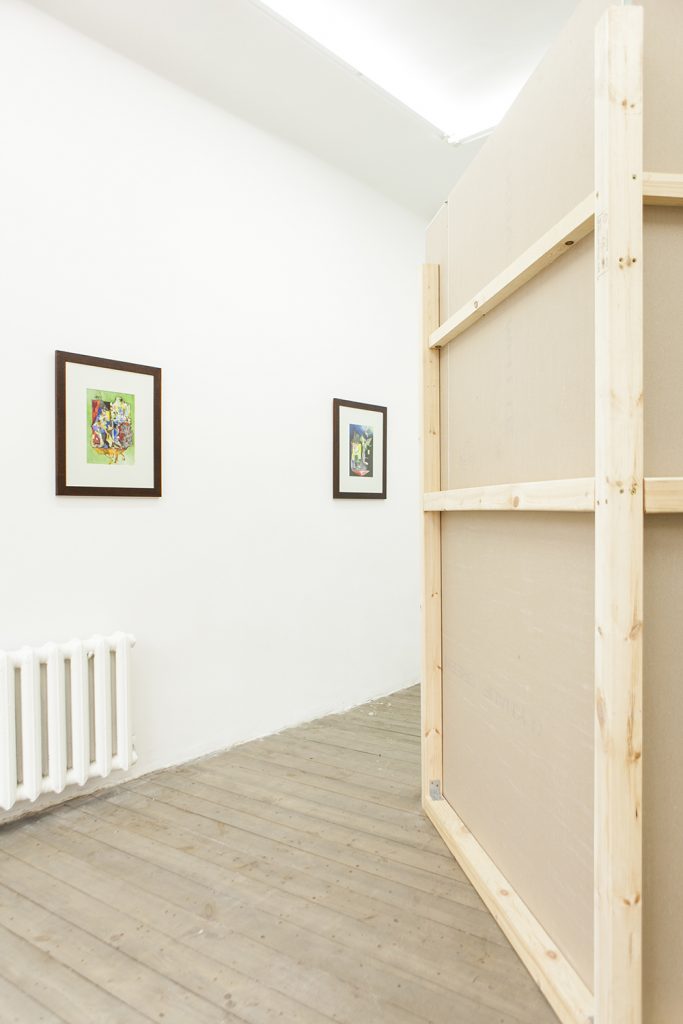








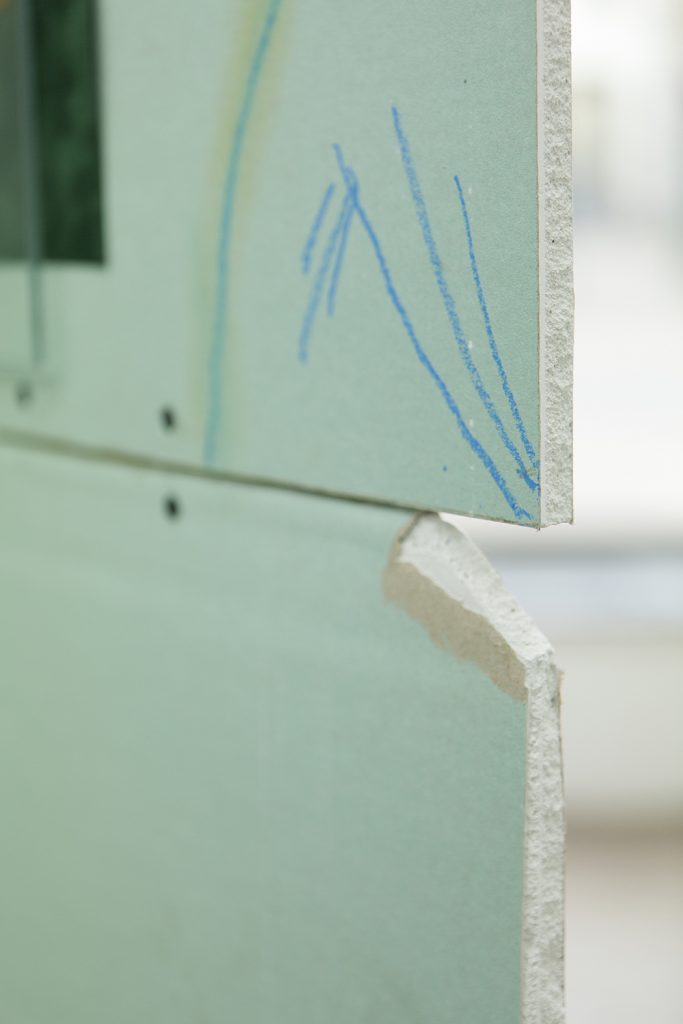


Photo: Kristiāna Marija Sproģe
Beer Metaphysics. The Kitchen
Vytenis Burokas
14/02 – 16/03/2017
A month is a perfect time to brew a gruit of metaphysical investigation. 427 space will become a kitchen-incubator of fermentation and a stage of it’s manifestation trough the human bodies. There’s no accident, yeast will adapt to the new conditions of this particular space in the wobbly whirling universe. Also a play Beer Metaphysics: symposium of humans and microorganisms will be present as a source of liquid recipe and as a text on the tip of a tongue and/or mind. The nature of the characters in the play will be revealed during the processes of fermentation and spiritual transformation, thus the epopee, Dionysian pleasantry, metaphysical fisticuffs, can be experienced (not necessary, though).
Accompaniment: Φ
Beer Metaphysics: symposium of humans and microorganisms. The first and only book of cosmogonic rumours – is a humorous demonstration of his research and methodology that pulls ideas around philosophy, science, fermentation, rituals, inebriation, and food into a vortex. Rather than merely cite and quote his research, the artist stages an increasingly drunken discussion between himself and a crowd of philosophers, scientists, and theoreticians. In the play, Burokas ventriloquizes, and is inhabited by, a strange constellation of characters who have all dealt with the properties of the clinamen in some way, including the philosophers Aristotle, Epicurus, Lucretius, Julia Annas, and Michel Serres, the scientists Henri Poincaré and Ilya Prigogine, and the composers and theorists John Rahn and Michel Dellvile, amongst many other voices.
– Post Brothers
Vytenis Burokas (b. 1990, Vilnius, Lithuania) is an artist and curator, interested in visible and invisible manifestations of history and memory fragments, documenting time passing and responding with choreography, movements, narrative to highlight traces, slips of a tongue and language. His focus lies in rituals and happenings in social environments, architecture. Vytenis Burokas has graduated Contemporary Sculpture BA, MA at the Vilnius Academy of Arts (2009-2015) and completed the Rupert Educational Program in Vilnius (2013-2014). Burokas has exhibited in Autarkia (Vilnius, LT), Contemporary Art Center (Vilnius, LT), Šiauliai Art Gallery (Šiauliai, LT), Komplot (Brussels, BE), Nida Art Colony (Nida, LT), Granada Film Festival (Granada, Spain), performances at Rupert (Vilnius, LT).
Support: State Culture Capital Foundation, Lithuanian Council for Culture, VKN, Malduguns